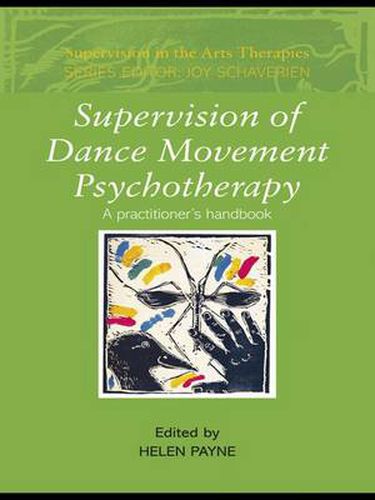Readings Newsletter
Become a Readings Member to make your shopping experience even easier.
Sign in or sign up for free!
You’re not far away from qualifying for FREE standard shipping within Australia
You’ve qualified for FREE standard shipping within Australia
The cart is loading…






Supervision of Dance Movement Psychotherapy is the first book of its kind to explore the supervisory process in the psychotherapeutic practice of movement and dance. Helen Payne brings together international contributors to discuss how the language of the body plays an important part in the supervisory experience for psychotherapists and counsellors.
Contributors consider a variety of models and examine the role of supervision in a range of professional and cultural settings, forming a theoretical base to current practice in dance movement psychotherapy. Chapters include:
an overview of supervision in dance movement therapy working psychotherapeutically with the embodied self transcultural issues the use of authentic movement in supervision a novice practitioner’s experiences.
Outlining key concepts from both theory and practice, this book contributes towards a deeper understanding of the mentor-trainee relationship and the curative power of movement and dance. Supervisors and supervisees in dance movement psychotherapy as well as the arts therapies, counselling, and psychotherapy will find it invaluable.
$9.00 standard shipping within Australia
FREE standard shipping within Australia for orders over $100.00
Express & International shipping calculated at checkout
Supervision of Dance Movement Psychotherapy is the first book of its kind to explore the supervisory process in the psychotherapeutic practice of movement and dance. Helen Payne brings together international contributors to discuss how the language of the body plays an important part in the supervisory experience for psychotherapists and counsellors.
Contributors consider a variety of models and examine the role of supervision in a range of professional and cultural settings, forming a theoretical base to current practice in dance movement psychotherapy. Chapters include:
an overview of supervision in dance movement therapy working psychotherapeutically with the embodied self transcultural issues the use of authentic movement in supervision a novice practitioner’s experiences.
Outlining key concepts from both theory and practice, this book contributes towards a deeper understanding of the mentor-trainee relationship and the curative power of movement and dance. Supervisors and supervisees in dance movement psychotherapy as well as the arts therapies, counselling, and psychotherapy will find it invaluable.